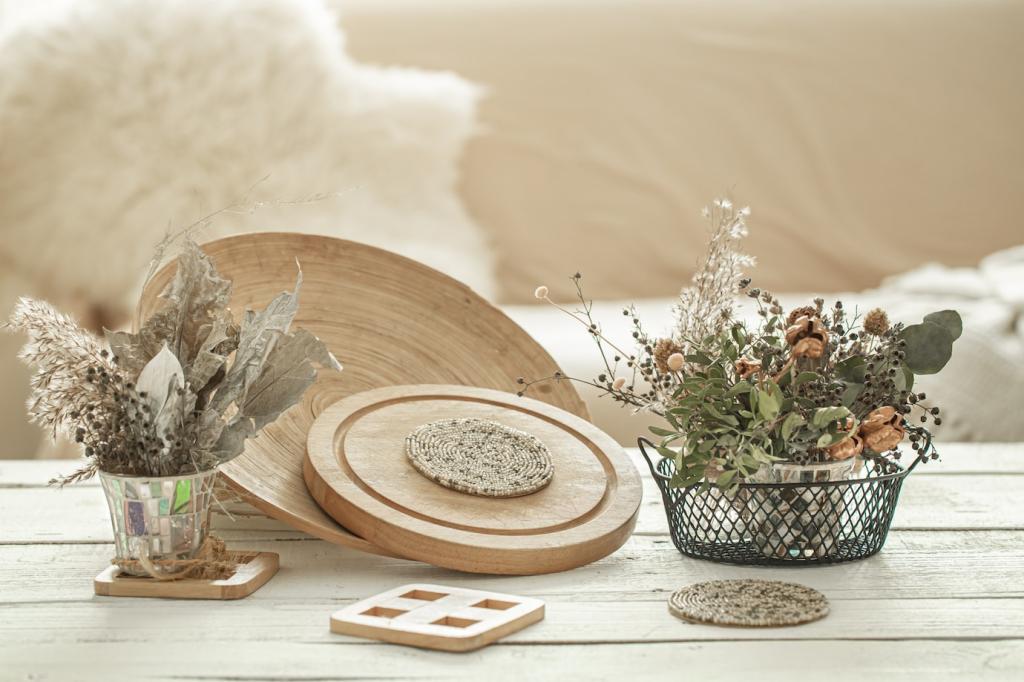
How to Choose Non-Toxic Paint for Your Interiors
Chosen theme: How to Choose Non-Toxic Paint for Your Interiors. Create a calmer, healthier home without sacrificing color, durability, or style. Today we decode labels, finishes, and application tricks so you can breathe easier after the last coat dries—then share what worked for you.

Zero-VOC typically means fewer than five grams per liter of volatile organic compounds, while low-VOC is higher but still reduced. Remember that added colorants can increase VOCs, so ask for low-VOC tints. Always verify numbers on the technical data sheet, not just the marketing label.

Look for water-based formulations free from ammonia, added formaldehyde donors, phthalates, and APE surfactants. Safer choices often use improved acrylics, plant-derived binders, or mineral bases. Avoid heavy solvent content and strong odors; your nose can be a helpful early warning system during selection.

Third-party labels like GREENGUARD Gold, Green Seal GS-11, Blue Angel, or EU Ecolabel can signal stringent emission limits. Read the certification scope: some apply to base paint only, not tinted versions. Compare multiple certifications to ensure low emissions and safer ingredients across your specific product.
Choosing the Right Finish and Color Without Compromise
Matte hides imperfections but marks more easily, eggshell balances forgiveness and scrub-ability, and satin or semi-gloss resists moisture in kitchens and baths. Non-toxic options exist for every sheen. Choose the lowest practical sheen to reduce glare while keeping cleaning simple where hands and splashes frequently land.


Health and Air Quality Benefits You Can Feel
Lower-emission paints usually mean less stinging in the eyes, fewer headaches, and gentler recovery after painting. Sensitive noses notice the difference quickly. If you host guests or sleep in painted rooms soon after a project, this comfort shift can transform the entire experience into something pleasantly uneventful.
Health and Air Quality Benefits You Can Feel
Cumulative exposure matters. Selecting non-toxic paints helps reduce ongoing off-gassing, supporting restful sleep and calmer mornings. Over months, you’ll appreciate that your home smells like home, not solvents. Share your observations with us, and tell other readers how the change affected your routines and energy levels.


Preparation and Application for the Cleanest Results
Create cross-breezes by opening windows on opposite sides, then use a box fan facing outward to exhaust air. A second fan gently feeding fresh air helps. If pollen or smoke is high, limit open windows and ventilate in shorter bursts while using a HEPA purifier near the work zone.
Preparation and Application for the Cleanest Results
Choose a zero-VOC primer that blocks stains without harsh solvents. For patching, select low-odor spackle and let each layer cure fully before painting. Sand with a vacuum-attached sander to reduce dust. Clean walls with mild soap and water, then allow complete dryness to avoid trapping moisture beneath coats.
Budgeting Smartly for Non-Toxic Paint
Premium non-toxic paints often cover better, requiring fewer coats and fewer contractor hours. Reduced odor can let you occupy rooms sooner, saving on temporary lodging. Consider health benefits, time saved, and durability together. Share your budget tips in the comments so others can plan confidently and realistically.
Budgeting Smartly for Non-Toxic Paint
Splurge on high-traffic areas and bathrooms for scrubbability and moisture resistance. Save on closets or seldom-used rooms with value lines that still meet emission goals. Reuse quality tools, store leftovers properly, and calculate square footage carefully to avoid excess. Tell us where you found the best balance.
Budgeting Smartly for Non-Toxic Paint
Download the Safety Data Sheet and technical data sheet before purchase; they reveal VOC levels, coverage, and curing times. Ask about returns on unopened cans and confirm color policies. Keep batch numbers and receipts for touch-ups later. If you discover new store policies, share them to help fellow readers.
Mineral and Plant-Based Alternatives to Explore
Clay, limewash, and silicate paints offer ultra-low emissions and beautifully matte, breathable finishes. They excel on appropriate substrates and reward careful prep. If you’re curious, try a feature wall before a whole room. We’d love your feedback on texture, durability, and the unique depth these finishes provide.
Packaging, Waste Reduction, and Right-Sizing
Buy only what you need by using coverage calculators and measuring walls precisely. Store leftovers in airtight containers, label them clearly, and keep them in a temperate space. Ask your retailer about take-back programs or recycled-content cans to lower waste and keep materials in a useful loop.
Join the Community and Share Your Lessons
Have you found a stellar low-odor primer or a tint system that truly stays zero-VOC? Comment with brand, finish, and room type. Subscribe for our printable non-toxic paint checklist, and reply with questions—we’ll fold your real-world challenges into future guides that help everyone make healthier choices.
